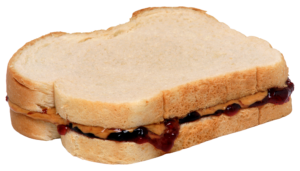
Earlier I blogged about mentor texts for procedure writing with primary grade students. Once you launch your unit with mentor texts, jump into shared writing of procedure texts with your students, co-creating models of procedure writing and related anchor charts with reminders for writing these texts. You might start with a “how-to” demonstration so the students have easily accessible content to contribute as you all create together. One suggestion is “how to” make a peanut butter and jelly sandwich. Start by asking the students to help you list the materials. Then demonstrate the first step (opening the bag of bread and pulling out two pieces? laying the pieces on a paper towel so you don’t make a mess); once you demonstrate, stop to engage the students in saying aloud (oral language emphasis) the step you took (to a partner?) and then in helping you generate a sentence for that step. Proceed until all steps are complete. You can ask the students to follow by drawing pictures of the steps (you might provide a graphic organizer with boxes and steps numbered) and to write their own sentences if time permits. While they are starting – make up half a dozen or so sandwiches, cut them in quarters, and pass them out to your writers!
The next day of writing workshop – review the shared writing. Post it for all students to see and ask the students, “What did we do as writers?” Solicit from the students the steps you all took as writers and document these steps on another piece of chart paper, creating an anchor chart. For example –
- We made a list of the ingredients.
- We thought about the first step.
- We wrote the first step.
- ETC.
Now I would suggest the students write a procedure text on how to make another kind of sandwich and it doesn’t necessarily have to be a real sandwich (turkey or whatever). Instead they could have fun with this and create a crazy sandwich. Ways to support your writers in this endeavor and differentiate –
- Generate a class list of possible ingredients (shoe strings, mud, birds’ nests, etc.) and write on chart paper for students to use as a resource when they work independently.
- Chunk the writing tasks. Ask the students to complete one step listed on the anchor chart at a time and then regroup. So they might write their list of ingredients, regroup with the class, turn to share with a peer, and then you review the next step before they go on (or that might be the end of the lesson for that day and they engage in writing the steps out the next day).
- For your emergent writers – ask them to draw pictures and label. So, for example, they might draw each of the ingredients and attempt to label. Attempting to label includes listening for the first sound in the word and writing the letter for that sound. You might even need to pull this group and help them start before moving on to help other more capable writers.
- With a large group of emergent writers, you might need to do a whole-class crazy sandwich, engaging in more shared writing/modeled drawing/shared labeling or listing, with the whole class on the carpet, each child sitting with their own clipboard, paper, and pencil ready to go.
- Use paper that can be folded into parts for each step – tri-fold or quadruple fold – so the students can easily see how they are “proceeding” :).
- Be aware when you are giving too much support and back off – release responsibility.
This 2-3 day routine – shared writing and then students writing with guidance or independently – for the next few weeks of the workshop is a helpful way to scaffold students to mastery. Examples of topics the first grade teachers I’m working with and I came up with include:
- Shared writing about a game the whole class has played (ex: Heads-up Seven up); then guided/independent writing about a game each student chooses
- Shared writing about one way we take care of ourselves (ex: brushing our teeth, brushing/combing our hair, washing our hands)
You might have students with broader experiences – like skiing or setting up tents or making crafts; experiences they have engaged in many times, enough to tell you the steps. This is not always the case for some of our students. So this team of teachers brainstormed everyday experiences they knew their students understand well. Something to think about.
Consider publishing, too! The first grade team I’m working with is working towards a final week of the unit when the students pick one of the procedures they drafted to revise, edit, and publish in a small book form to put in their classroom libraries.
Just a note – this unit clearly supports meeting CCSS. Common Core connections in first grade include writing standard 2 in 1st grade – “write informative/explanatory texts in which they name a topic, supply some facts about the topic and provide some sense of closure.” (Writing Standard 2 is similar for kinder & first). When students write procedure texts – these can be considered “explanatory” texts – they name the procedure, give key details (steps, “facts” in a sense”) and then they can wrap up with their own thoughts on this type of sandwich (or whatever) (“sense of closure”).
Okay…I’m hoping to write more details about “shared writing” of procedure texts soon and to share some student writing samples with you!
